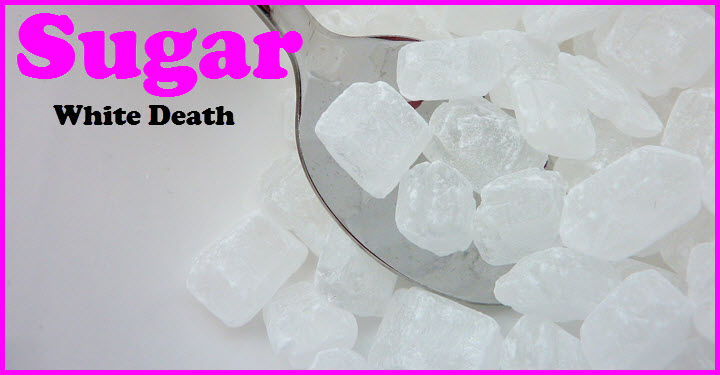Don't Be Fooled Some Of These Names Are Tricky

Did you know the average American consumes about 15 teaspoons of sugar a day. And that sugar is probably the most unhealthy ingredient in our diets.
The biggest problem we face concerning sugar is that it is purposely being hidden from us in order that we will buy and consume a multitude of products.
Let's face it we are addicted to sugar. We love the taste of sugar. Processed food manufacturers know this and incorporate sugar into their foods to make it taste better an to get us to consume more of their foods.
Sugar is a key factor in many major diseases, including heart disease and diabetes.
But how do you recognize sugar in the ingredient lists of all the foods we consume because it goes by so many different names.
Below is a list of 56 of these different names. I'll bet they invent new ones all the time to confuse us.
Many foods contain natural sugars. It's the added sugar you have to be on the outlook for.
Glucose and Fructose
These are the 2 main types of sugar and the affect the body differently.
Glucose can be metabolized by most every cell in our bodies as apposed to fructose that only gets metabolized by our livers.
So the high added fructose sugars are more harmful.
1. Sugar/Sucrose
Sucrose is the most common type of sugar.
Table sugar is usually extracted from sugar cane or sugar beets. It consists of 50% glucose and 50% fructose, bound together.
Sucrose is found in many foods, including ice cream, candy, pastries, cookies, soda, fruit juices, canned fruit, processed meat, breakfast cereals and ketchup, to name a few.
2. High-Fructose Corn Syrup (HFCS)
High-fructose corn syrup is a widely used sweetener, especially in the US.
It is produced from corn starch via an industrial process, and consists of both fructose and glucose.
There are several different types of HFCS, which contain varying amounts of fructose.
Two notable varieties are:
- HFCS 55: This is the most common type of HFCS. It contains 55% fructose and 45% glucose, which makes it similar to sucrose in composition.
- HFCS 90: This form contains 90% fructose.
High-fructose corn syrup is found in many foods, especially in the US. These include soda, breads, cookies, candy, ice cream, cakes, cereal bars and many others.
3. Agave Nectar
Agave nectar, also called agave syrup, is a very popular sweetener produced from the agave plant.
It is commonly used as a “healthy” alternative to sugar because it doesn't spike blood sugar levels as much as many other sugar varieties.
However, agave nectar contains about 70–90% fructose, and 10–30% glucose.
Given the harmful health effects of excess fructose consumption, agave nectar may be even worse for metabolic health than regular sugar.
It is used in many “health foods,” such as fruit bars, sweetened yogurts and cereal bars.
4–37. Other Sugars With Glucose and Fructose
Most added sugars and sweeteners contain both glucose and fructose.
Here are a few examples:
- Beet sugar
- Blackstrap molasses
- Brown sugar
- Buttered syrup
- Cane juice crystals
- Cane sugar
- Caramel
- Carob syrup
- Castor sugar
- Coconut sugar
- Confectioner's sugar (powdered sugar)
- Date sugar
- Demerara sugar
- Evaporated cane juice
- Florida crystals
- Fruit juice
- Fruit juice concentrate
- Golden sugar
- Golden syrup
- Grape sugar
- Honey
- Icing sugar
- Invert sugar
- Maple syrup
- Molasses
- Muscovado sugar
- Panela sugar
- Raw sugar
- Refiner's syrup
- Sorghum syrup
- Sucanat
- Treacle sugar
- Turbinado sugar
- Yellow sugar
38 – 52. Sugars With Glucose
These sweeteners contain glucose, either pure or combined with sugars other than fructose (such as other glucose units or galactose):
- Barley malt
- Brown rice syrup
- Corn syrup
- Corn syrup solids
- Dextrin
- Dextrose
- Diastatic malt
- Ethyl maltol
- Glucose
- Glucose solids
- Lactose
- Malt syrup
- Maltodextrin
- Maltose
- Rice syrup
Check out the great source article for the remaining sugar names and the article summaries
Summary
Try to consume as much natural food as possible. When consuming processed food watch the labels closely for the different sugar names. And don't forget they will use multiple names which have to be added up to get the real story.
The featured image came from pixabay.com.
